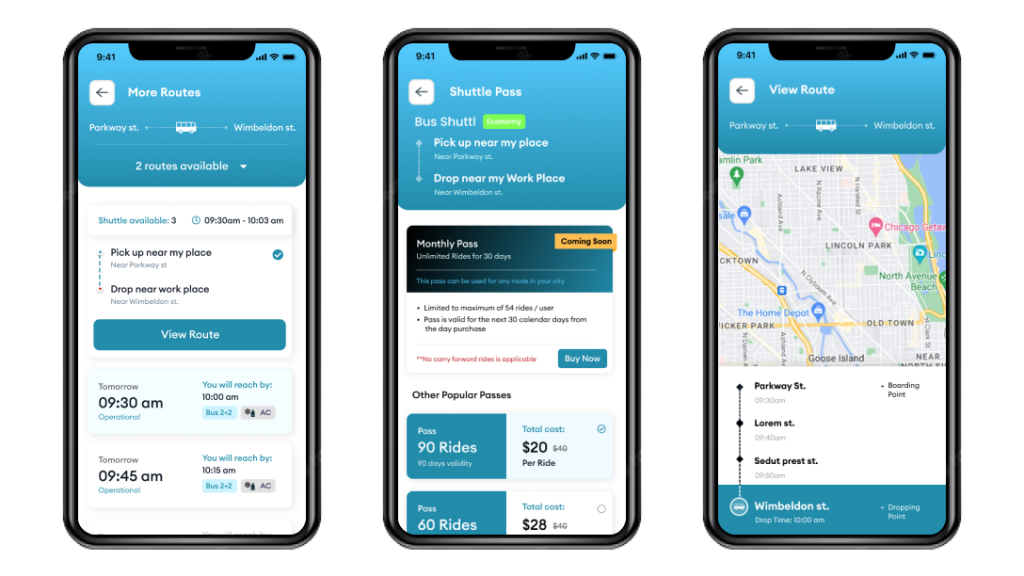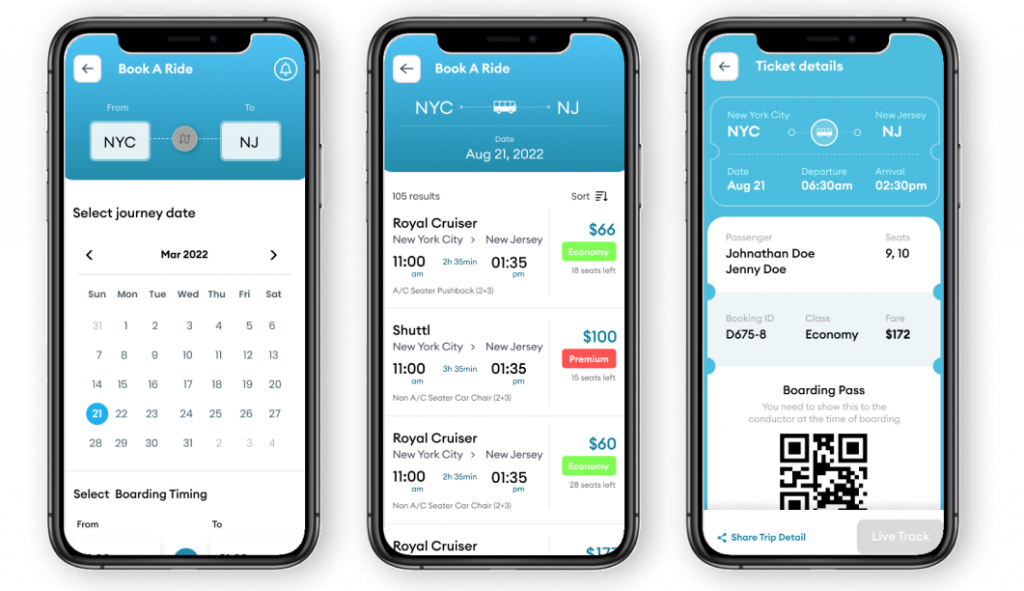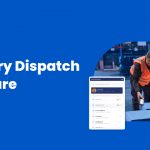
4 Ways Airport Shuttle Software Helps Enhance Operational Efficiency
The emergence of airport shuttle software has been a game-changer for companies. It helps in tackling the demands of operational excellence in the dynamic world of airport transportation. Where efficiency and punctuality are crucial. The incorporation of cutting-edge technology has also become a strategic need for airport shuttle businesses. Businesses are looking to improve their operational efficiency, as every minute matters in this demanding environment.
There has never been a greater need for seamless transfer solutions. Airports act as entry points to locations all over the world. Airport Shuttle Software is leading this pattern change in the new AI-powered world of technology. It also provides an extensive toolkit to improve many aspects of shuttle operations. With features like reservation management, real-time tracking, dynamic route optimization, simplified booking procedures, and data-driven decision-making, this software offers a range of features that completely change the way airport shuttle companies handle their everyday operations.
In this article, we set out to find out the four essential ways that airport shuttle software becomes the foundation of operational effectiveness for airport shuttle companies. As we examine each aspect in more detail, the overall story will also show the many ways in which this technology not only satisfies but goes beyond the expectations of the travel industry and modern travelers, paving the way for a new era of superior airport transportation services.
How Airport Shuttle Software Increases Efficiency
1. Advanced Reservation Management
Effective reservation administration is essential when it comes to airport shuttle operations to deliver a smooth and client-focused service. Airport Shuttle Reservation Software also offers cutting-edge features that completely rethink how companies manage reservations, bringing about a major shift in this industry.
a. User-Friendly Interface for Effortless Reservations
Airport Shuttle Reservation Software’s smart and user-friendly interface makes the reservation procedure simpler for passengers. Hence, with only a few clicks, tourists can easily book shuttle services, choose their desired timings, and personalize their trip thanks to the seamless design.
b. Instant Confirmation and Reservation Updates
The platform guarantees instantaneous confirmation of bookings, giving travelers immediate reassurance regarding the services they have reserved. Furthermore, early communication of any updates or modifications to reservation details—such as modifications to shuttle schedules or availability—improves transparency and reduces uncertainty.

c. Centralized Reservation System for Operational Efficiency
A consolidated reservation system is integrated with Airport Shuttle Booking Software, which also gathers all booking information in one place. The reservation process is streamlined by this centralized method, which enables shuttle companies to effectively montior and arrange booking requests. This lowers the possibility of mistakes and makes it easier for different operational components to coordinate with one another, which improves overall efficiency.
Essentially, Airport Shuttle Software’s sophisticated reservation management features not only put passengers’ convenience first but also give shuttle companies the tools they need to precisely coordinate operations and strike a balance between operational excellence and customer satisfaction.

2. Dynamic Route Optimization
Dynamic route optimization, the second essential component of Airport Shuttle Software, is crucial for effectiveness, responsiveness, and passenger happiness in the field of airport shuttle operations. By utilizing artificial intelligence and real-time data analytics, this function also transforms conventional route planning and guarantees that shuttle companies can handle traffic complications and unanticipated disruptions with unmatched accuracy.
a. Real-Time Traffic Adaptation
Airport Shuttle Dispatch Software regularly analyzes traffic conditions in real time using sophisticated algorithms. Shuttle operators may instantly modify routes, avoiding crowded regions and optimizing travel times, thanks to the software’s seamless integration with GPS and traffic monitoring systems. This improves shuttle efficiency overall and cuts down on delays.
b. Adaptive Scheduling for Peak Times
Conventional scheduling techniques might not be able to keep up with the varying demand for passengers during periods of high travel demand. Dynamic route optimization anticipates peak times and adjusts accordingly. This proactive strategy reduces wait times for passengers and improves the use of available resources.
AllRide offers Demand Forecasting tools that help cab businesses predict the trends of traffic, future routes, and transport demand using AI and data-driven algorithms.

c. Fuel Efficiency and Environmental Impact
Airport Shuttle Software also increases fuel efficiency through route optimization based on real-time data. Improved route design avoids needless fuel use, which lessens the shuttle operations’ negative environmental effects. Because it is consistent with sustainability objectives, dynamic route optimization plays a key role in the advancement of environmentally friendly airport transportation.
3. Real-Time Tracking and Communication
Real-time tracking and communication mark a major leap in airport shuttle operations, bringing previously unheard-of transparency and efficiency to the forefront.
a. Enhanced Passenger Experience
With real-time tracking, passengers can keep an eye on the precise location of their shuttle, giving them a greater sense of security and control. With simple interfaces, passengers may monitor the shuttle’s whereabouts in real-time, which minimizes waiting times and decreases uncertainty.
b. Operational Visibility for Providers
Shuttle operators can see all of their fleet’s movements in real-time thanks to airport shuttle dispatch software. By facilitating prompt reactions to unforeseen disturbances or traffic delays, this operational oversight guarantees effective service delivery. By being proactive in resolving problems, operators can maximize shuttle performance overall.
c. Direct Communication Channels
Direct communication between shuttle operators and riders becomes easier with the software. It promotes clear and timely communication through the seamless transmission of instant messages about delays, schedule modifications, or other pertinent information. This function not only improves the traveler experience but also enables operators to efficiently control expectations, reducing the likelihood of any disruptions.
It redefines passenger shuttle interaction with real-time tracking and communication features. This feature raises the bar for the dependability of airport shuttle services, improves operational efficiency, and increases customer happiness by giving operators and customers fast access to reliable information.
4. Data-Driven Decision Making
This software feature is also critical, acting as a tactical requirement to maximize operational effectiveness. Shuttle companies can precisely and strategically negotiate the intricacies of the transportation landscape using comprehensive data-driven decision-making.
a. Performance Metrics and Key Indicators
Any business can feel empowered by Airport Shuttle Software’s real-time access to performance analytics and critical indicators. Through metrics such as passenger load factors and on-time performance, operaors can obtain significant information about the effectiveness of their services. Strategic planning uses this data as its foundation, enabling companies to pinpoint opportunities for development and build on their operational advantages.
b. Passenger Behavior Trends
Comprehending passenger behavior is essential to customizing services to fulfill changing needs. The program examines passenger data to identify patterns, including popular routes and peak travel periods. Shuttle companies can proactively modify timetables, distribute resources effectively, and improve overall service quality by analyzing these patterns.
c. Route Optimization and Resource Allocation
Effective resource allocation and shuttle route optimization are examples of data-driven decision-making in action. By continuously analyzing demand variations and traffic patterns, the software helps operators dynamically modify routes to save travel time and guarantee optimal resource use. This flexibility also reduces delays and boosts shuttle performance, which increases operational efficiency.
Essentially, Airport Shuttle Dispatch Software’s incorporation of data-driven decision-making enables companies to strategically traverse the complexities of the transportation environment. The software also gives users a thorough grasp of how things currently run. Thus, it gives them the power to actively influence how their airport shuttle services develop in the future.
To sum up, airport shuttle software is an essential tool for companies looking to improve their operational effectiveness. The impact of this technology is revolutionary. Ranging from sophisticated reservation administration to real-time tracking, dynamic route optimization, simplified booking procedures, and data-driven decision-making. The adaptation of airport shuttle software is also a strategic need for companies. Thus, it is crucial for companies that are looking to stay ahead as the transportation sector develops.
The deployment of Airport Shuttle Software streamlines operations. It also paves the way for a time when airport shuttle companies can prosper in an atmosphere of heightened productivity. It also enhances client happiness and data-driven innovation. Businesses must make sure they are in a position to fulfill the demands of modern travelers. They should also offer dependable and seamless service by utilizing the potential of this technology.





